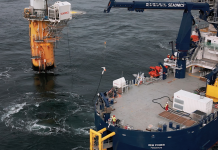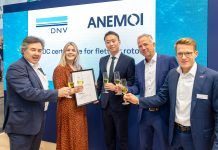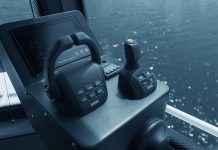A partnership between renewable energy industry leaders has announced the final details of a project that will help accelerate the transition to an energy mix led by renewable energy and aim to provide even more reliable and consistent renewable energy production adapted to energy demand and grid requirements.
Developed by Australia’s international renewable energy company, Windlab, with support from Vestas, the global leader in sustainable energy solutions, the innovative 60.2 MW Kennedy Energy Park phase I is the world’s first utility-scale, on-grid wind, solar, and battery energy storage project. Designed to supply consistent and reliable renewable electricity that can help meet power demand in Australia, Kennedy Phase I can also shape a path forward for how Australia and other countries can integrate more renewable energy into their energy mix and address grid stability challenges that have been a traditional restraint to greater uptake of renewable energy.
The project is in Flinders Shire in central north Queensland, Australia, which has world-class wind and solar resources. Kennedy Phase I will feature 43.2 MW of Vestas’ V136-3.6 MW wind turbines, 15 MW of solar, and 2 MW/4 MWh Li Ion battery storage, all managed by a Vestas customized control system that will operate the hybrid power plant.
In order to support further hybrid projects in Australia, Windlab, with Vestas, will share the knowledge and experience from building and operating Kennedy Phase I through the Australian Renewable Energy Agency.
“Kennedy Phase I is a first-of-its-kind project in Australia, and it will lead the nation in the deployment of innovative, high reliability renewable energy capable of closely matching network power demand,” said Windlab CEO Roger Price. “We have a great working relationship with Vestas, whose products and service capabilities were instrumental in managing challenging grid connections and compliance, and develop a competitive cost of energy.”
%%1217-Windlab%%
Through the complementary combination of wind and solar energy, Kennedy Phase I can deliver a more constant and demand-driven energy production and increased capacity factor. The Vestas control system will provide the capability for wind and solar to work together as an integrated power plant and comply with grid requirements.
“We are grateful for the opportunity to join Windlab on this project, which places Vestas at the forefront of sustainable energy solutions and is a testament to how we are providing solutions that make renewable energy more cost-competitive and grid compliant,” said Johnny Thomsen, senior vice president of product management for Vestas. “With 35 years of experience in meeting complex grid requirements and developing advanced power plant controllers, Vestas has the foundation to also lead the way in hybrid solutions.”
“Hybrid solutions combining wind, solar, and storage hold a huge potential for Australia,” said Clive Turton, president of Vestas Asia Pacific. “Kennedy Phase I has the potential to leverage Australia’s abundant renewable energy resources and be a giant leap forward for the country in reaping those resources, while ensuring a consistent and reliable electricity supply. Kennedy shows that Vestas, together with visionary partners like Windlab, can provide the solutions.”
Vestas also will provide a 15-year Active Output Management 4000 (AOM 4000) service agreement, which includes a full-scope service package for the wind turbines as well as scheduled maintenance for the solar panels, battery storage, and electrical systems.
A consortium between Vestas and Quanta Services will deliver the engineering, procurement, and construction of the project, which is expected to be in operation by the end of 2018.
This project is planned to be the first phase of Windlab’s larger 1,200 MW Kennedy Energy Park, which seeks to deliver significant benefits to north Queensland and Australia in reduced emissions and sustainable energy generation.
Source: Windlab
For more information, go to www.windlab.com



























